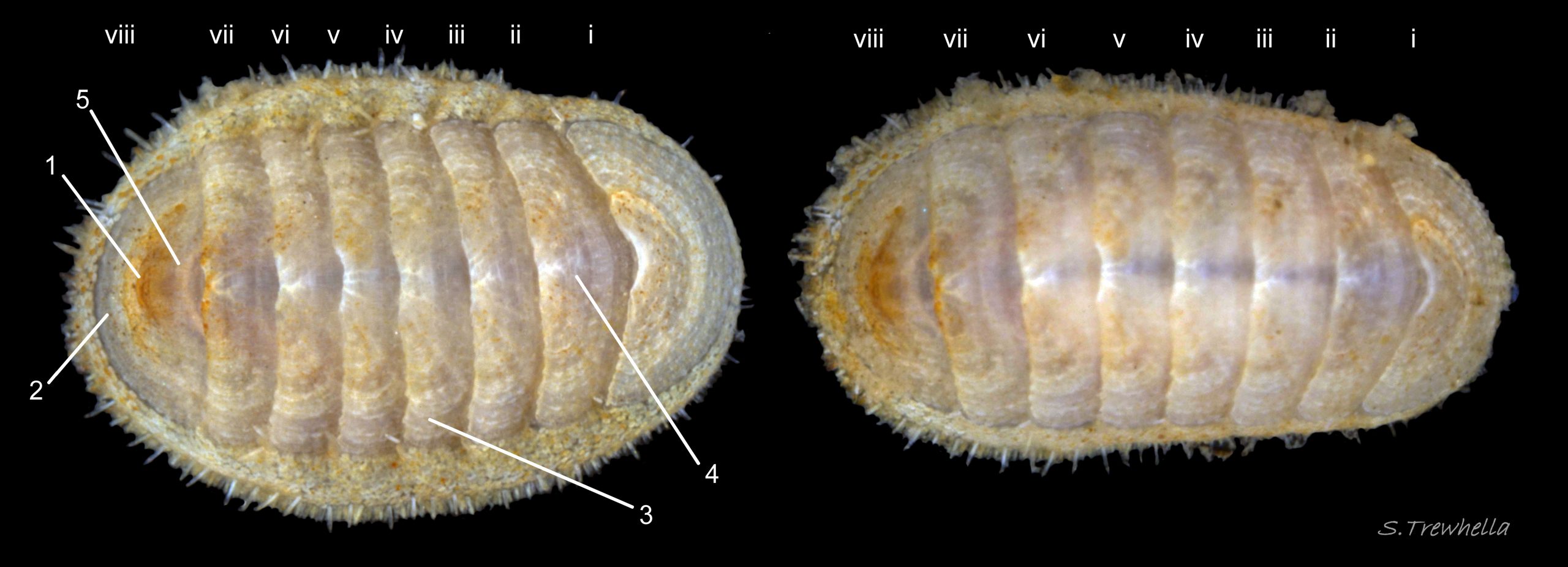Length 4.1 mm. The head and foot rarely, if ever, protrude into view naturally on a live animal, and can only be examined if the animal is removed from the substrate or placed on glass.
These two images of the same individual show how the outline varies when the girdle is spread or retracted. On the left, 32% of the active chiton’s total width is girdle, reducing to 15% on the inactive state on the right. Most identification guides, such as Kaas & Belle (1985) and Jones & Baxter (1987), assert it has a narrow girdle, probably because preserved specimens were examined.
The head valve (i) is semicircular, but its arch, with a very slight keel, often shows as a widely V-shaped posterior margin on live animals to create an approximately crescentic outline.
The tail valve (viii) is large and semicircular with a central mucro (1) .
The surface of the tegmentum (outer shell-layer) has large granules that vary from rounded bosses to rough angular sculpture.
They are arranged radially on the head valve (i), postmucronal area (2) of the tail valve and the lateral triangles (3) of intermediate valves (ii to vii).
They are arranged in longitudinal lines on the central areas (4) of intermediate valves and the antemucronal area (5) of the tail valve.
The orientation of granules is the same on L. cancellatus, but the granules are larger on L. scabridus.
Dorset, England. February 2018. Leg. © S. Trewhella.
02 Leptochiton scabridus

